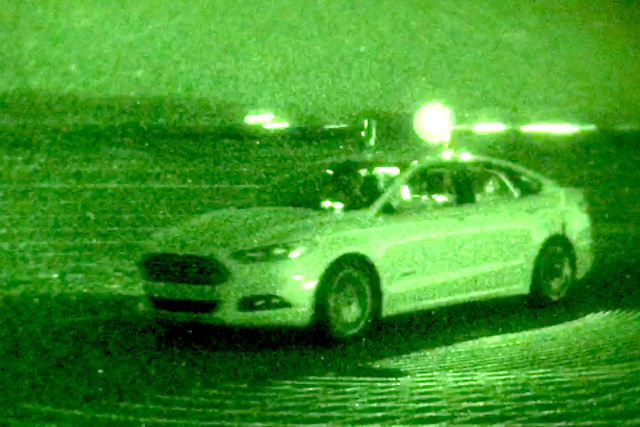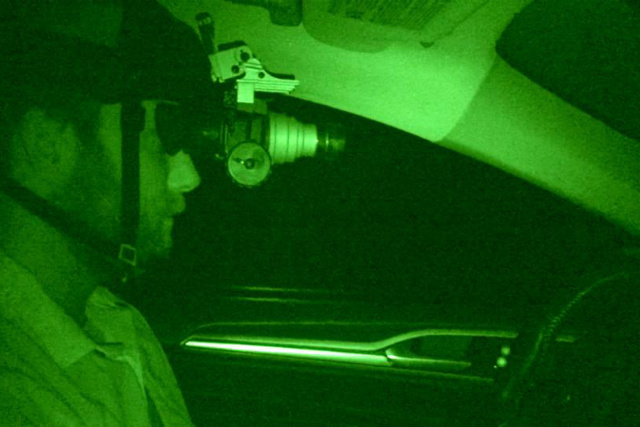Ford has demonstrated that it can get a car with driverless technology to tackle winding country roads without the use of its headlights in the pitch black dark of night.
Using a heavily-modified Ford Fusion (sold as the Mondeo in the UK), Ford managed to get one of its autonomous research vehicles to navigate around its Proving Ground in Arizona.
LiDAR technology
The car is equipped with sensors, radar, cameras and LiDAR. The latter feature is particularly important to Ford, as LiDAR is what allows the car to drive independently on roads even without street-lighting.

The LiDAR sensors shoot out 2.8 million laser pulses a second to precisely scan the surrounding environment. LiDAR pulses allow the autonomous Ford to pinpoint itself on the map in real time.
While testing its autonomous car’s abilities during the pitch black driving test, Ford engineers, sporting night-vision goggles, monitored the Fusion from inside and outside the car.
The night-vision goggles allowed the engineers to see the LiDAR functioning in the form of a grid of infrared laser beams projected around the vehicle as it drove past.

One of Ford’s research scientist and engineers, Wayne Williams, commented: “Inside the car, I could feel it moving, but when I looked out the window, I only saw darkness,
“As I rode in the back seat, I was following the car’s progression in real time using computer monitoring. Sure enough, it stayed precisely on track along those winding roads.”
Future plans
This update is an intriguing development in Ford’s research towards creating vehicles that can achieve fully-autonomous driving capabilities.
During this year, Ford is planning to triple its autonomous vehicle test fleet. That would bring the total number to about 30 self-driving Ford Fusion Hybrid models for testing on roads in California, Arizona and Michigan.



